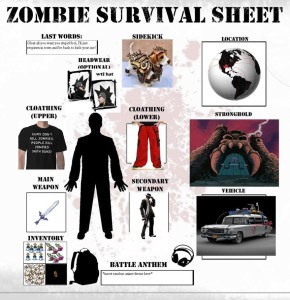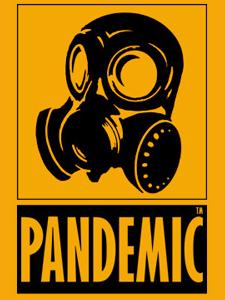Tag Archives: outbreak
EUROPE TRYING TO TURN AMERICA INTO A ZOMBIE WASTELAND

A WAVE of gruesome cannibal attacks that have left Americans fearing a “zombie apocalypse” is being fuelled by a drug imported from the UK, The Sun can reveal.
The mind-bending narcotics that make users eat living human flesh are bought off the internet — labelled as BATH SALTS.
Cops have been shocked by a surge in frenzied attacks by people, which includes:
HOMELESS Ronald Poppo, 65, had three-quarters of his FACE chewed off by Rudy Eugene, 31, who was high on the drug when cops shot him dead last month in Miami. The officers had repeatedly ordered him to stop but he just growled at them like a wild animal. Poppo is now partially blind.
MUM Pamela McCarthy, 35, who was tasered by cops as she attacked her three-year-old son this month. She had a cardiac arrest and died in hospital in New York.
CRAZED Carl Jacquneaux, 43, bit a chunk out of the face of his ex-wife’s new lover Todd Credeur, 48, when he turned up at her home in Lafayette, Louisiana, this month.
ON the same day, Brandon de Leon, 21, was restrained in a Hannibal Lecter-style face mask when he tried to bite off the hands of cops who arrested him in Miami. He screamed at them: “I’m going to eat you.”
Another user said the “bath salts” made him feel “evil” — and convinced him he was possessed by Jason Voorhees, the psycho in the Friday the 13th movies.

Freddy Sharp, 27, from Tennessee, said: “It felt like the darkest, evilest thing imaginable. I was hallucinating about being in an insane asylum and being possessed by Jason Voorhees. I couldn’t stop whatever was in me.”
TV reporter Cenk Uygur watched footage of Freddy being restrained by medics and said: “He looks like a zombie. People are talking about a zombie apocalypse and all these people eating each other. I cannot fathom why you would do bath salts that make you want to eat someone’s face off.”

US authorities fear the cannibalistic attacks could become a pandemic. They have discovered that many shipments are coming from the UK.
In an investigation by network NBC, a girl of 16 ordered a batch from a firm which, despite saying it did not sell to under-18s, soon delivered. A reporter said: “Just days later, the drugs arrived from England to the NBC studios. Even more alarming is cops that say they cannot stop the sale of the drugs as they are not illegal.”
The Sun knows of several British “bath salts” sites which boast delivery to the US in five-to-eight working days — but we will not print the addresses.

One mockingly suggests users put them in their bathtub to help “erase fatigue and invigorate the body”. It says the products are offered “for scientific research purposes only” and are “not designed for human consumption”.
But it also advises buyers to use the drug “sparingly” and predicts the effects will last for several hours. No mention is made, however, of the risk that users will turn into the crazed, flesh-eating monsters horrifying America.
Earlier this month, a naked man was arrested ranting and screaming outside the Los Angeles home of British actor Orlando Bloom, 35. He was said to be manic and sweaty as he prowled the estate.

Users of the drug have reported feeling incredibly hot, which is why many strip off. They can also develop superhuman strength — meaning it can take five or six men to restrain them.
They become so manic and delusional that the term “excited delirium” is being used to describe their mental state. The shocking wave of attacks has sparked fears of a real-life zombie outbreak as seen in movies such as Dawn Of The Dead.
The dangers of so-called legal highs has hit the headlines in the UK in recent weeks with two incidents linked to a new “bath salts” drug called Benzo Fury.

Alex Herriet, 19, died after taking the £10 high at the Rockness festival in Scotland.
And Katie Wilson, 19, paraded naked in a Tesco in Bourne, Lincs, after taking the drug.
The “bath salts” are actually a cocktail of amphetamine-like chemicals, mainly mephedrone, MDPV and methylone. Authorities in the US and UK have tried to close loopholes allowing the drugs to be sold.

Last year America’s Drug Enforcement Administration imposed a 12- month emergency ban on the three chemicals. MDPV is illegal in the UK.
But experts have warned the current rules are ineffective.
David Shurtleff, of the National Institute on Drug Abuse in the States, explained drug makers are constantly “tweaking” the molecular structure of the substance to get round regulations while maintaining the effects.
Dr Shurtleff said: “The problem is that chemists are very clever.”

The number of calls America’s Poison Control Centers receive about the drug rose from 304 in 2010 to 6,138 in 2011. Addiction expert Dr Deborah Mash of University of Miami says the problem should chill people to the bone. She said: “This is almost like a science fiction episode where someone creates a dangerous molecule and it is released into the public. The results are terrifying in the extreme.”

Things have got so out of hand in America that many people feared a mutant virus was to blame.
The Centre for Disease Control and Prevention had to release a statement saying it is not aware of any virus that can cause zombie-like behaviour.
Addiction expert Dr Karen Hylen believes the cannibals were already disturbed — and that eating human flesh can become addictive. Dr Hylen said: “It takes a very disordered psyche to become interested in cannibalism. But once a person entertains such fantasies and acts on them, eating flesh will release brain chemicals that can make the process addictive.”
Luka Magnotta, 29, is the most infamous recent “flesh eater” after he was held on suspicion of killing and eating a lover.
But the Canadian oddball, who lived in London for a while, is not known to have used “bath salts”.
The Home Office said it is trying to root out the “bath salts” menace. A spokesman said: “MDPV is an illegal and harmful drug and stiff penalties are in place for people who possess or supply it. Drugs ruin lives which is why we are taking tough action against dealers and criminal gangs and helping people to free themselves from the cycle of dependency.”
Mutant bird flu would be airborne

Mutant bird flu would be airborne, scientists say
Here’s what it takes to make a deadly virus transmissible through the air: as few as five genetic mutations, according to a new study.
This research, published in the journal Science, is the second of two controversial studies to finally be released that examines how the H5N1 bird flu virus can be genetically altered and transmitted in mammals. Publication of both studies had been delayed many months due to fears that the research could be misused and become a bio-security threat.
Although these particular engineered forms of H5N1 have not been found in nature, the virus has potential to mutate enough such that it could become airborne.
H5N1 influenza can be deadly to people, but in its natural forms it does not easily transfer between people through respiratory droplets, as far as scientists know. The World Health Organization has recorded 355 humans deaths from it out of 602 cases, although some research has questioned this high mortality rate.
The journals Science and Nature had agreed to postpone the publication of the two studies related to the genetically altered virus.
In January, the National Science Advisory Board for Biosecurity recommended that this research be published without “methods or details” that terrorists might be able to use for biological weapons. The board also said the data could assist in preparing for a possible future outbreak, however.
Then in February, the World Health Organization convened a meeting, at which the recommendation was to publish the studies – just not yet. In April, the National Institutes of Health chimed in, also recommending publication.
The first study to be published on the topic was in the journal Nature, and was led by the University of Wisconsin-Madison researcher Yoshihiro Kawaoka. It was released in May.
The other research group, which authored the new study in Science, was led by Ron Fouchier at the Erasmus Medical Center in Rotterdam, Netherlands.
Both Kawaoka and Fouchier’s groups created a mutated version of H5N1 that made it easier to transmit from mammal to mammal. They used ferrets because these animals are a good approximation for how viruses behave in humans.
Fouchier’s study examines what mutations would be necessary to get the virus airborne. He and colleagues found five mutations consistent in a form of the H5N1 flu virus that could spread among ferrets through the air.
None of the ferrets died after developing the flu, the researchers said.
In a separate analysis, researchers looked at the likelihood that an airborne avian flu virus would evolve on its own from the H5N1 currently found in nature.
This study, also published in Science this week, looked at nearly 4,000 strains of influenza virus and frequently found two of the five mutations that appear to be involved in airborne transmission. These two mutations have been found in viruses from both birds and humans, although not in naturally-occurring H5N1 strains.
Derek Smith of the University of Cambridge, who co-authored that study, said at a press briefing that it’s possible that only three mutations are necessary for the virus to evolve.
Smith’s group also did mathematical modeling to look at whether the other mutations could evolve when the bird flu jumps to a human or other mammal.
“We find that it is possible for such a virus to evolve three mutations within a single host,” Smith said during the press call.
If it takes four for five mutations to become airborne, that would be more difficult – but it’s unclear just how likely it would be, Smith said.
While the Nature study looked at how a bird flu virus could become airborne through mutations and re-assortment with other viruses, the latest research in Science suggests mutations alone could do the trick.
Dr. Anthony Fauci, director of the National Institute of Allergy and Infectious Diseases, told reporters that the benefits from the Science study, in terms stimulating ideas and pursuing ways to understand the transmissibility, adaptability and pathogenesis of the virus, outweigh the risks that someone will use the data for nefarious purposes.
“Does that mean that there’s no risk? No, of course not. I can’t tell you at all
that there’s no risk. But the benefits in my mind outweigh the risks,” he said.
Making the research available generally will hopefully spark input on this topic from researchers in a wide variety of fields, he said.
It is technologically possible to create vaccine based on the genetic code of a flu virus strain including this one, researchers said. Several companies are already making H5N1 vaccines.
Research is ongoing to accelerate the amount of vaccine doses available by using adjuvants, which are agents that modify the effects of vaccines, Fauci said. There is also work ongoing into using computational sequencing to anticipate every possible influenza strain that could emerge, such that a databank could be established to prepare for the outbreak of any one of them, he said.
“Right now we’re in a much, much better position than we were when we had vaccine available after the peak of the 2009 H1N1 two years ago,” Fauci said.
Zombie Apocalypse Has Begun! PREPARE PREPARE – Outbreaks Occurring Nationwide
Beginning in May, on a sunny day in Miami, Florida, America began living its very own Zombie fantasy. As you know, there are thousands of homeless people in the world. Well 65 year old Ronald Poppo, who was one of these unfortunates, was walking in an alley of down town Miami, when 31 year old Rudy Eugene decided he looked delicious. Eugene was found naked under a bridge, chewing on Poppo’s face. The Miami police yelled at Eugene to stop, but he wouldn’t and for Poppo’s safety, the police shot at Eugene. They shot at him in the chest several times but he was still alive, after shooting him even more, Eugene dropped to the ground dead. Poppo is now in a hospital in Miami. He is doing fine and is to have physical therapy.
Zombie fantasy. As you know, there are thousands of homeless people in the world. Well 65 year old Ronald Poppo, who was one of these unfortunates, was walking in an alley of down town Miami, when 31 year old Rudy Eugene decided he looked delicious. Eugene was found naked under a bridge, chewing on Poppo’s face. The Miami police yelled at Eugene to stop, but he wouldn’t and for Poppo’s safety, the police shot at Eugene. They shot at him in the chest several times but he was still alive, after shooting him even more, Eugene dropped to the ground dead. Poppo is now in a hospital in Miami. He is doing fine and is to have physical therapy.
Poppo is not the only zombie victim in the U.S. there was a woman who ate part of her baby’s brain, three of its toes, and part of its intestines. There was another college student who killed and ate his roommate. That definitely makes me not want to live in dorms. There was another attack where the man threw his own intestines at the police officers. Finally, a Canadian porn star lost it and ate someone, oh and also threatened the Prime Minister.
Yes, there are finally Zombies in North America and who knows if they are in any other part of the world. There is nothing we can do about it. Let’s face it; we all know that this country is all pretty screwed up. There are some crazy people in the country.
People are starting to say that the Zombie apocalypse is almost here. When I was younger, my mother joked around about the zombie apocalypse. I got really scared. Little did know that I was going to write an article about Zombies. People are freaking out about this when you are actually pretty safe. There is a 0.25 in a 10 percent chance that you would be a Zombie victim. But just in case, you should be ready for the Zombies next attack.
Look, everyone knows that the Zombies are coming and there is nothing we can do about it. Just be prepared. This is the updated list of the do’s and don’ts, and how to tell if Zombies are in your town.
Let’s start.
How do you know there are zombies in your town?
Well, if you start hearing crazy people chanting to themselves, then yeah they are on the verge on Zombie-hood (or they are in a popular teen cult…either way, probably bad news). We all know that the crazy people are going to become zombies first because they were neglected and left to live on the streets. You can also tell there are Zombies in the town when you hear screaming and police cars all night long. And the final way to see if there are Zombies in your town is if you see a lot of new (but empty) graves. That means one of three things:
A- The Zombies have been crawling out of their graves.
B- There have been a lot of deaths, which means that they died from Zombies eating them.
C- That pesky teen cult thing again.
How do you prepare for a Zombie apocalypse?
Two words: Get Weapons.
When picking your weapons, you want to get something that you can shoot or throw or stab them with from a long distance because you don’t want to get the Zombie juice on you. The main weapon that you want is a gun. When you get a gun, your first choice is a hand gun. Hand guns can hold more bullets and you can empty and re-lode fast. They are easy for travel and you can put them almost anywhere. You want to make sure that you have more than one gun because the gun can get lost or broken. If you can’t get the gun, then you want a machete. Go ahead and cut off their heads. Make sure that you don’t get the Zombie juice in your blood through a cut or something…it will turn you into a Zombie. You can use pretty much anything, just kill the brain. Cut off the head then smash it. If you want you can burn it. Just don’t let any other Zombie eat the body because then the Zombie will get stronger.
After you get your weapons, you want to get a safe spot. I would say a basement because Zombies can’t lift heavy things or their limbs will fall off. Or you’re going to want to hide in an attic. You want to be as far away from a graveyard as possible. Try getting a cabin in the middle of the woods. Make sure that you have food storage because you don’t know how long you will be there.
How you know you got infected and what to do.
If you got any Zombie juice on you, and you didn’t disinfect it by burning the area you are probably on your way to being a Zombie. If it gets into your blood then kill yourself if you don’t what to become a Zombie. If you decide to kill yourself then you should knock yourself out and have someone throw you in a fire so you know that you won’t become a Zombie. If the Zombie juice gets in your system without you knowing the symptoms of Zombieitis, you’re going to want to go through this check list:
- Are you choking on nothing?
- Do you have green splotches on your skin, dizziness, and craving for raw meat? Especially Brains?
- Is your skin falling off like a leper?
If you said yes to any of these, you may want to kill yourself.
But you never know when they are going to crawl out of their grave…OH WAIT THEY HAVE!
Y’all had better stop reading and start killing the Zombies
ZOMBIE OUTBREAK – NEW YORK MOM GOES ON RAMPAGE!!
Another zombie attack – New York mom on ‘Bath Salts’ attacks her three-year-old – VIDEOS
Deranged woman tried to strangle her pit bull and bite a police officer before she died
A New York woman, allegedly high on “bath salts”, was killed after police taser her. Onlookers photographed Pamela McCarthy who was attacking her three-year-old son.
Onlookers photographed Pamela McCarthy who was attacking her three-year-old son.
The 35-year-old went into cardiac arrest after a run in with state troopers outside her apartment in Munnsville on Tuesday. The police were called to the scene at 7.45pm with reports that McCarthy was punching and choking her toddler and trying to strangle her pit-bull. A neighbor then photographed her running towards her terrifying son, who sought refuge with his father, Jason Williams.
McCarthy’s attack is just one in a spate of violent incidents reported across the United States involving the drugs “bath salts”, a synthetic drug, known as “the new LSD”.
Last month Rudy Eugene, who was believed to be on “bath salts” chewed off, homeless man, Ronald Poppo’s face, in Miami. In Louisiana, Carl Jacquneaux also bit off a piece of his neighbor’s cheek. Earlier this week a North Miami man stripped naked and exposed himself to a three-year-old girl while on the drug.
In fact these attacks, thought to be the blame of this legal drug, are becoming so prevalent that the media is now labeling them under the term “Zombie Apocalypse”.
A neighbor who witnessed McCarthy’s attack told NewsChannel 9 WSYR “She was… just running back and forth around the street and she got a hold of one of her dogs and she was rolling around on the ground with her legs wrapped around it – she was strangling the dog.”
Another said: ‘She was definitely on something. Who does that?’
When the police arrived McCarthy was described as “violently combative” and growled at the police, and even tried to bite one of the officers.
State trooper Christopher Budlong tried to subdue her using pepper spray, but it had no effect. He then used a taser on the woman but was unable to handcuff her. She was then taken into custody and then went into cardiac arrest.
Her boyfriend Williams said she had a history of drug abuse but was shocked by her behavior. Their son lucky escaped the attack with minor injuries and is now in the custody of William’s mother.
He said “I told her mom, “She needs help”,’ Williams told WSYR. ‘Everyone says to get rid of her because I tell all mean stories. I got nothing good to say. I love her…love her to death…then I seen that.”
Here’s the ABC News report:
Here’s the CNYCentralNews eyewitness report:

 said the country was not ready to defend itself against an avian flu pandemic. Have things changed since?
said the country was not ready to defend itself against an avian flu pandemic. Have things changed since?